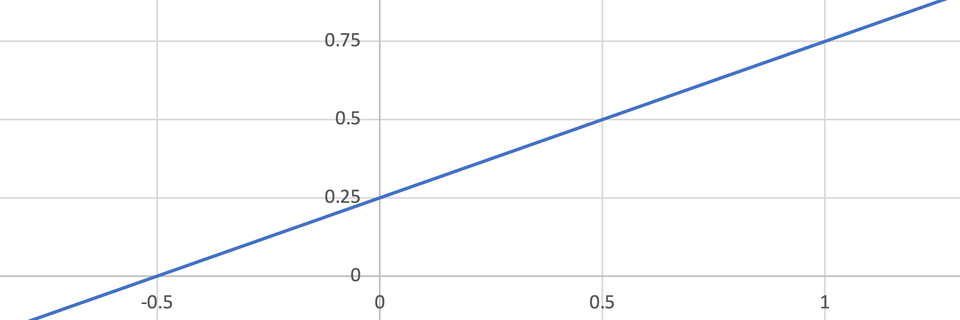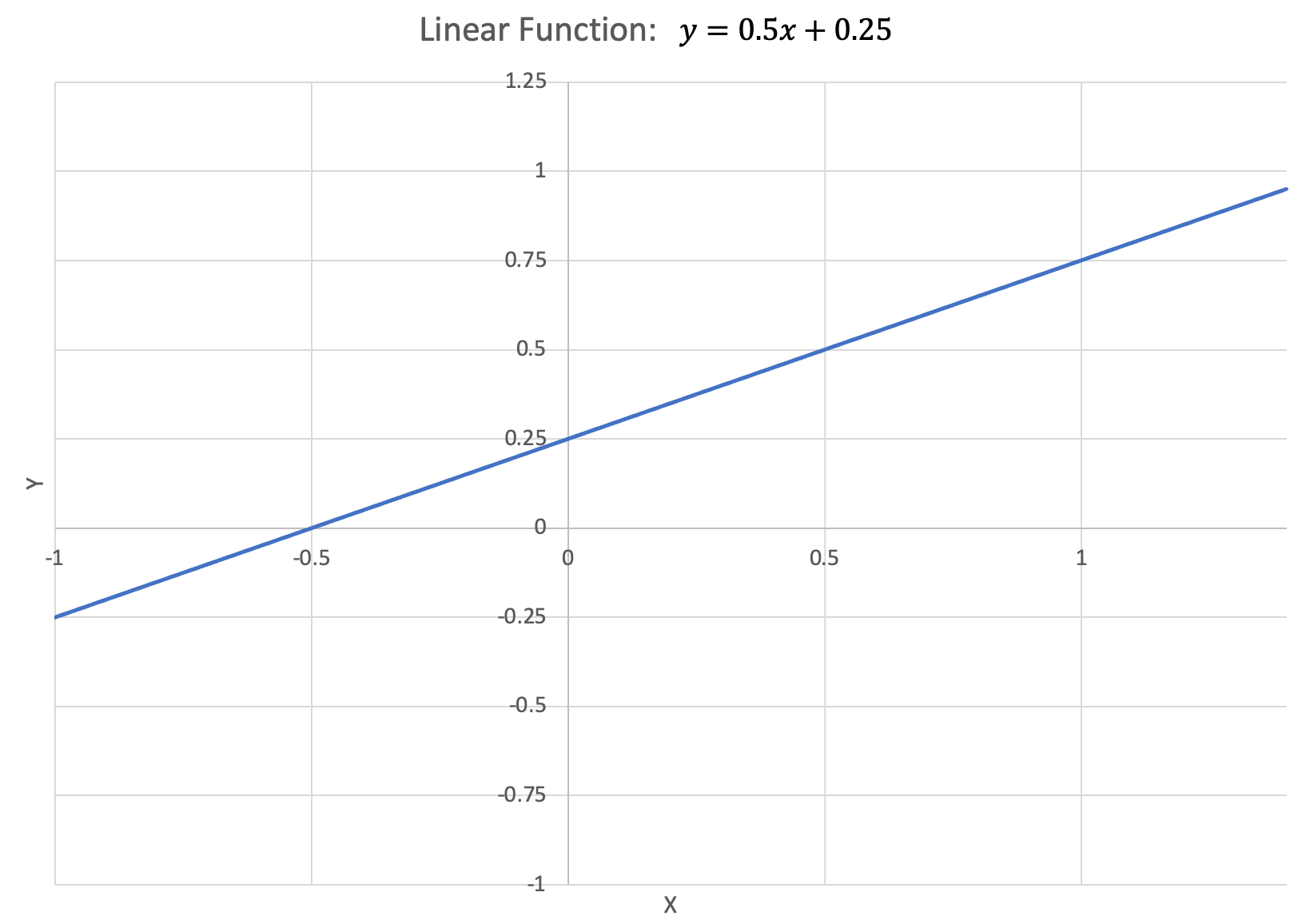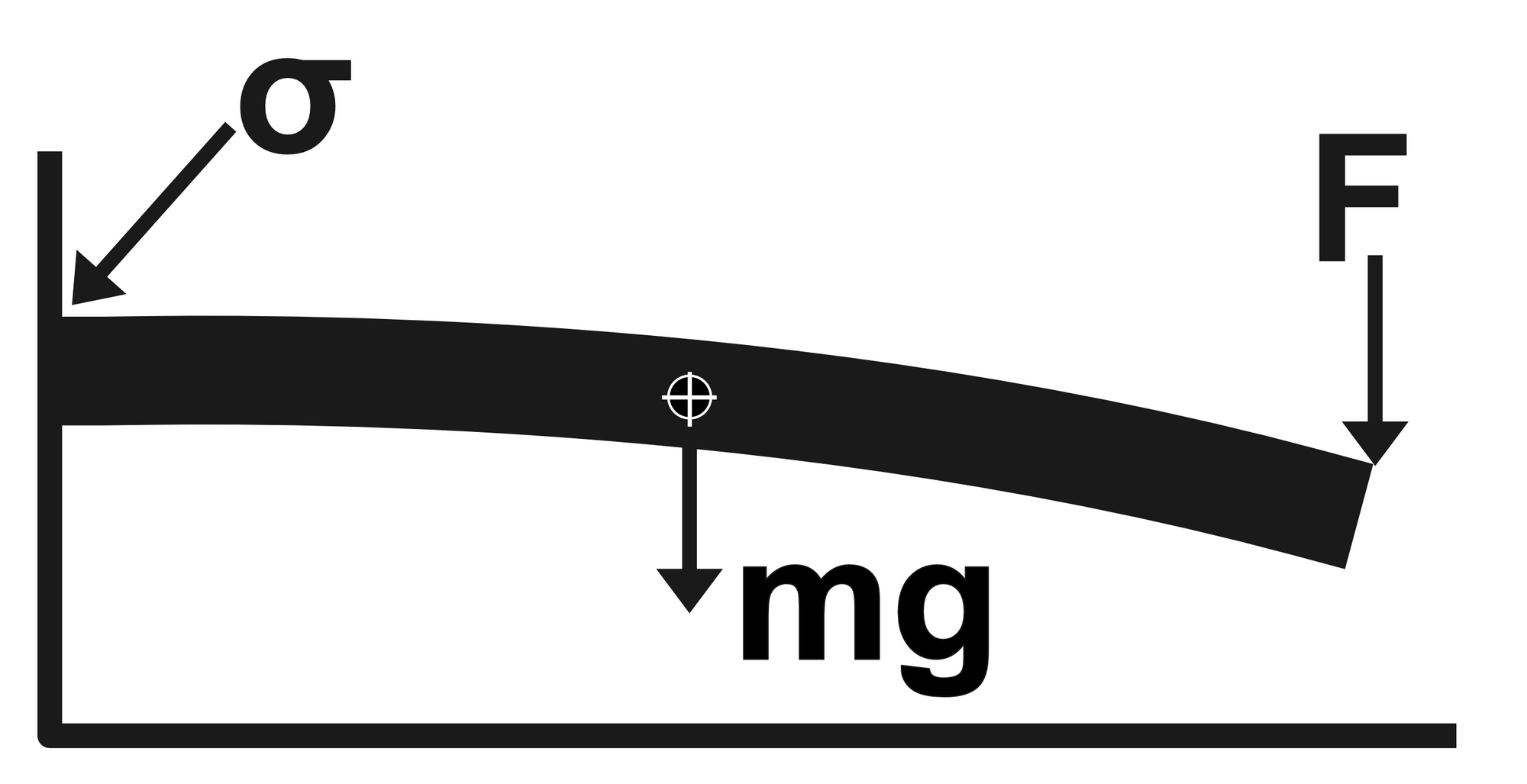Linear Functions

A function is a mathematical machine that takes an input and returns an output. The humble linear function is simple yet one of the most important functions in mathematics. Below are examples of several linear functions:
$$y = 3x+2$$
$$f(x) = -2x+4$$
$$g = 3h+6$$
Notice anything in common? They all have the form:
$$y = mx + b$$
where $m$ and $b$ are numbers.
This form of this equation is called the slope-intercept form for linear functions, so named because $m$ corresponds to the slope of the function and $b$ to the y-axis intercept (the function value when $x=0$). Determining the slope and y-intercept of linear functions is a very common exercise in Algebra 1 classes.
When graphed, linear functions appear as straight lines.

A second form of a linear function is called the standard form:
$$Ax + By = C$$
where $A$, $B$, and $C$, are numbers.
Some examples of linear functions in the standard form include:
$$4x + 6y = 32$$
$$2x - 4y = 8$$
The final form of a linear function we will discuss is the point-slope form:
$$y-y_1 = m(x-x_1)$$
where $m$, $y_1$ and $x_1$ are numbers. The name of the point-slope form originates because the linear function intersects the point $(x_1,y_1)$ and has slope $m$. Some examples of linear functions in the point-slope form include:
$$y-1 = 4(x-2)$$
$$y+2 = 3(x-8)$$
We will use the slope-intercept form for almost all practical uses but it is important to recognize that there are other forms and they may show up.
Converting between Linear Function Forms
Converting between linear function forms is big topic in Algebra 1 courses that deserves a sidebar.
Consider the standard form of a linear function:
$$Ax + By = C$$
We can manipulate it with algebra to look like the slope-intercept form:
$$\frac{A}{B}x + y = \frac{C}{B}$$
$$y = -\frac{A}{B}x +\frac{C}{B}$$
Look familiar? For a standard form linear function $Ax + By = C$, it's slope intercept form is:
$$y = mx + b$$
where $m = -\frac{A}{B}$ and $b = \frac{C}{B}$
Consider the point-slope form of a linear function:
$$y-y_1 = m(x-x_1)$$
We can manipulate it with algebra to look like the slope-intercept form:
$$y-y_1 = mx-mx_1$$
$$y= mx-mx_1+y_1 $$
$$y= mx+(y_1-mx_1)$$
Look familiar? For a point-slope form linear function $y-y_1 = m(x-x_1)$, it's slope intercept form is:
$$y = mx + b$$
where $m = m$ and $b = y_1-mx_1$
Through these same basic algebraic manipulations, conversions can be obtained to transform any form to another.
Below are a few examples of the practical usefulness of linear functions.
Position and Speed
Consider a car is traveling at $40\:mph\:(miles\:per\:hour)$ and has already traveled $30\:miles$. We can model the total distance $d$ the car will have traveled after an amount of time $t$ as:
$$d = 40t + 30$$
Paying for Healthcare
Consider a doctor charges a flat rate of $\$100$ per visit plus $\$150$ per each hour a patient spends in their office. We can model the amount of money $C$ a patient will be charged based on the time $t$ they spend in the office as:
$$C = 150t + 100$$
Estimating Stress in a Beam
Consider a cantilevered rectangular beam with an applied force.

The beam's weight applies a downward force which causes a stress $\sigma_{gravity}$. The additional stress in the beam due to the force is proportional to to the applied force, $\sigma_a = bF$ where $b$ is the beam constant (dependent on the dimensions of the beam) and $F$ is the applied force. The total stress in the beam is the sum of the stress due to gravity and the stress from the applied force:
$$\sigma = \sigma_a + \sigma_{gravity}$$
Substituting $bF$ for $\sigma_a$ we obtain:
$$\sigma = bF + \sigma_{gravity}$$
This is a linear function.
